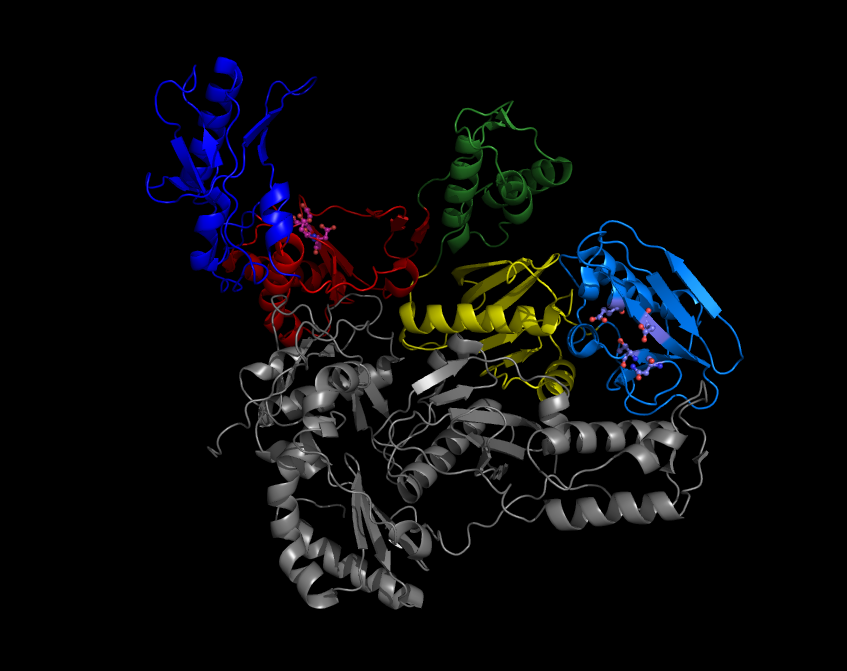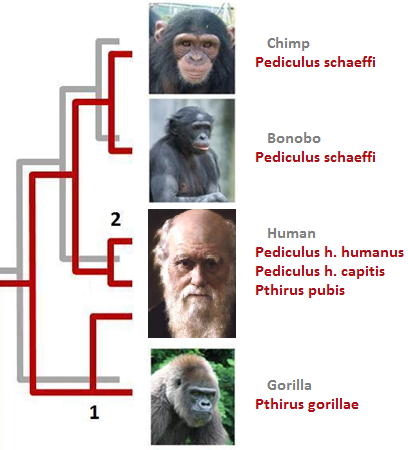|
Hepadnavirus
''Hepadnaviridae'' is a family of viruses. Humans, apes, and birds serve as natural hosts. The family contains five genera. Its best-known member is hepatitis B virus. Diseases associated with this family include: liver infections, such as hepatitis, hepatocellular carcinomas (chronic infections), and cirrhosis. It is the sole accepted family in the order ''Blubervirales''. Taxonomy The following genera are recognized: * ''Avihepadnavirus'' * '' Orthohepadnavirus'' * '' Herpetohepadnavirus'' * '' Metahepadnavirus'' * '' Parahepadnavirus'' History and discovery Although liver diseases transmissible among human populations were identified early in the history of medicine, the first known hepatitis with a viral etiological agent was Hepatitis A, in the picornaviridae family. Hepatitis B Virus (HBV) was identified as an infection distinct from Hepatitis A through its contamination of yellow fever vaccine. The vaccine contained human serum as a stabilizing agent which was HBV-i ... [...More Info...] [...Related Items...] OR: [Wikipedia] [Google] [Baidu] |
Transmission Of Hepadnaviruses
The transmission of hepadnaviruses between their natural hosts, humans, non-human primates, and birds, including intra-species host transmission and cross-species transmission, is a topic of study in virology. Hepadnaviruses are a family of viruses that can cause liver infections in humans and animals. They are Group VII viruses that possess double-stranded DNA genomes and replicate using reverse transcriptase. This unique replication strategy, combined with their extremely small genomes and a very narrow host and tissue tropism, has distinguished them enough to be classified in the family Hepadnaviridae. There are two recognized genera: * '' Orthohepadnavirus'', type species: ''hepatitis B virus'' (HBV) * ''Avihepadnavirus'', type species: ''duck hepatitis B virus'' (DHBV) Structure With the example of human HBV: the particular feature of the HBV structure is the presence of three different forms in the plasma of infected patients: * Dane particle (diameter ≈ 42 nm): th ... [...More Info...] [...Related Items...] OR: [Wikipedia] [Google] [Baidu] |
Orthohepadnavirus
''Orthohepadnavirus'' is a genus of viruses, in the family ''Hepadnaviridae''. Humans and other mammals serve as natural hosts. There are 19 species in this genus. Diseases associated with this genus include: hepatitis, hepatocellular carcinoma (chronic infections), and cirrhosis Cirrhosis, also known as liver cirrhosis or hepatic cirrhosis, chronic liver failure or chronic hepatic failure and end-stage liver disease, is a chronic condition of the liver in which the normal functioning tissue, or parenchyma, is replaced .... Taxonomy The genus contains the following species, listed by scientific name and followed by the exemplar virus of the species: * ''Orthohepadnavirus bassarisci'', Ringtail hepatitis B virus * ''Orthohepadnavirus equidae'', Equid hepatitis B virus * ''Orthohepadnavirus felisdomestici'', Domestic cat hepatitis B virus * ''Orthohepadnavirus hominoidei'', Hepatitis B virus genotype D * ''Orthohepadnavirus lagothricis'', Woolly monkey hepatitis B viru ... [...More Info...] [...Related Items...] OR: [Wikipedia] [Google] [Baidu] |
Hepatitis B Virus
Hepatitis B virus (HBV) is a partially double-stranded DNA virus, a species of the genus '' Orthohepadnavirus'' and a member of the '' Hepadnaviridae'' family of viruses. This virus causes the disease hepatitis B. Classification Hepatitis B virus is classified in the genus '' Orthohepadnavirus'', which contains 11 other species. The genus is classified as part of the '' Hepadnaviridae'' family, which contains four other genera, '' Avihepadnavirus'', '' Herpetohepadnavirus'', '' Metahepadnavirus'' and '' Parahepadnavirus''. This family of viruses is the only member of the viral order ''Blubervirales''. Viruses similar to hepatitis B have been found in all apes (orangutans, gibbons, bonobos, gorillas and chimpanzees), in Old World monkeys, and in New World woolly monkeys (the woolly monkey hepatitis B virus), suggesting an ancient origin for this virus in primates. The virus is divided into four major serotypes (adr, adw, ayr, ayw) based on antigenic epitopes present on it ... [...More Info...] [...Related Items...] OR: [Wikipedia] [Google] [Baidu] |
Hepadnaviridae
''Hepadnaviridae'' is a family of viruses. Humans, apes, and birds serve as natural hosts. The family contains five genera. Its best-known member is hepatitis B virus. Diseases associated with this family include: liver infections, such as hepatitis, hepatocellular carcinomas (chronic infections), and cirrhosis. It is the sole accepted family in the order ''Blubervirales''. Taxonomy The following genera are recognized: * '' Avihepadnavirus'' * '' Orthohepadnavirus'' * '' Herpetohepadnavirus'' * '' Metahepadnavirus'' * '' Parahepadnavirus'' History and discovery Although liver diseases transmissible among human populations were identified early in the history of medicine, the first known hepatitis with a viral etiological agent was Hepatitis A, in the picornaviridae family. Hepatitis B Virus (HBV) was identified as an infection distinct from Hepatitis A through its contamination of yellow fever vaccine. The vaccine contained human serum as a stabilizing agent which was HBV ... [...More Info...] [...Related Items...] OR: [Wikipedia] [Google] [Baidu] |
Avihepadnavirus
''Avihepadnavirus'' is a genus of viruses, in the family ''Hepadnaviridae''. Birds serve as natural hosts. There are five species in this genus. Diseases associated with this genus include: hepatitis, hepatocellular carcinomas (chronic infections), and cirrhosis. Taxonomy The genus contains the following species, listed by scientific name and followed by the exemplar virus of the species: * ''Avihepadnavirus anatigruidae'', Duck hepatitis B virus Duck hepatitis B virus, abbreviated DHBV, is part of the genus '' Avihepadnavirus'' of the ''Hepadnaviridae'', and is the causal agent of duck hepatitis B. DHBV is a small DNA virus with a diameter of 40–45 nm. The viral envelope is ma ... * ''Avihepadnavirus ciconiardeae'', Heron hepatitis B virus * ''Avihepadnavirus psittaunius'', Parrot hepatitis B virus 1 * ''Avihepadnavirus psittaduorum'', Parrot hepatitis B virus 2 * ''Avihepadnavirus bonicursoris'', Elegant-crested tinamou hepatitis B virus Structure Viruses in ... [...More Info...] [...Related Items...] OR: [Wikipedia] [Google] [Baidu] |
Hepatitis B Virus DNA Polymerase
Hepatitis B virus DNA polymerase is a hepatitis B viral protein. It is a DNA polymerase that can use either DNA or RNA templates and a ribonuclease H that cuts RNA in the duplex. Both functions are supplied by the reverse transcriptase (RT) domain. Structure The hepadnaviral P protein is organized into four domains: an N-terminal domain called the terminal protein (TP) (), a spacer domain which has no apparent function to the polymerase, a reverse transcriptase (RT) domain related to every other reverse transcriptase domain, and a C-terminal Ribonuclease H (RNase H) domain (). Uniquely, the hepadnavirus terminal protein (TP) domain contains a tyrosine residue that serves as a primer for the synthesis of the (−) DNA strand. Function The Hepatitis B virus (HBV) polymerase is a multifunctional enzyme, with both RNA-dependent and DNA-dependent polymerase functions, as well as an RNase H function. It acts on the HBV pre-genomic RNA (pgRNA) to reverse transcribe it to fo ... [...More Info...] [...Related Items...] OR: [Wikipedia] [Google] [Baidu] |
Reverse Transcriptase
A reverse transcriptase (RT) is an enzyme used to convert RNA genome to DNA, a process termed reverse transcription. Reverse transcriptases are used by viruses such as HIV and hepatitis B to replicate their genomes, by retrotransposon mobile genetic elements to proliferate within the host genome, and by eukaryotic cells to extend the telomeres at the ends of their linear chromosomes. The process does not violate the flows of genetic information as described by the classical central dogma, but rather expands it to include transfers of information from RNA to DNA. Retroviral RT has three sequential biochemical activities: RNA-dependent DNA polymerase activity, ribonuclease H (RNase H), and DNA-dependent DNA polymerase activity. Collectively, these activities enable the enzyme to convert single-stranded RNA into double-stranded cDNA. In retroviruses and retrotransposons, this cDNA can then integrate into the host genome, from which new RNA copies can be made via host-cell ... [...More Info...] [...Related Items...] OR: [Wikipedia] [Google] [Baidu] |
Baltimore Classification
Baltimore classification is a system used to classify viruses based on their manner of messenger RNA (mRNA) synthesis. By organizing viruses based on their manner of mRNA production, it is possible to study viruses that behave similarly as a distinct group. Seven Baltimore groups are described that take into consideration whether the viral genome is made of deoxyribonucleic acid (DNA) or ribonucleic acid (RNA), whether the genome is single- or double-stranded, and whether the sense of a single-stranded RNA genome is positive or negative. Baltimore classification also closely corresponds to the manner of replicating the genome, so Baltimore classification is useful for grouping viruses together for both transcription and replication. Certain subjects pertaining to viruses are associated with multiple, specific Baltimore groups, such as specific forms of translation of mRNA and the host range of different types of viruses. Structural characteristics such as the shape of the viral ... [...More Info...] [...Related Items...] OR: [Wikipedia] [Google] [Baidu] |
Snake
Snakes are elongated limbless reptiles of the suborder Serpentes (). Cladistically squamates, snakes are ectothermic, amniote vertebrates covered in overlapping scales much like other members of the group. Many species of snakes have skulls with several more joints than their lizard ancestors and relatives, enabling them to swallow prey much larger than their heads ( cranial kinesis). To accommodate their narrow bodies, snakes' paired organs (such as kidneys) appear one in front of the other instead of side by side, and most only have one functional lung. Some species retain a pelvic girdle with a pair of vestigial claws on either side of the cloaca. Lizards have independently evolved elongate bodies without limbs or with greatly reduced limbs at least twenty-five times via convergent evolution, leading to many lineages of legless lizards. These resemble snakes, but several common groups of legless lizards have eyelids and external ears, which snakes lack, althoug ... [...More Info...] [...Related Items...] OR: [Wikipedia] [Google] [Baidu] |
Host Switch
In parasitology and epidemiology, a host switch (or host shift) is an evolutionary change of the host specificity of a parasite or pathogen. For example, the human immunodeficiency virus used to infect and circulate in non-human primates in West-central Africa, but switched to humans in the early 20th century. All symbiotic species, such as parasites, pathogens and mutualists, exhibit a certain degree of host specificity. This means that pathogens are highly adapted to infect a specific host—in terms of but not limited to receptor binding, countermeasures for host restriction factors, and transmission methods. They occur in the body (or on the body surface) of a single host species or—more often—on a limited set of host species. In the latter case, the suitable host species tend to be taxonomically related, sharing similar morphology and physiology. Speciation is the creation of a new and distinct species through evolution and so unique differences exist between all life ... [...More Info...] [...Related Items...] OR: [Wikipedia] [Google] [Baidu] |
Turtle
Turtles are reptiles of the order (biology), order Testudines, characterized by a special turtle shell, shell developed mainly from their ribs. Modern turtles are divided into two major groups, the Pleurodira (side necked turtles) and Cryptodira (hidden necked turtles), which differ in the way the head retracts. There are 360 living and recently extinct species of turtles, including land-dwelling tortoises and freshwater terrapins. They are found on most continents, some islands and, in the case of sea turtles, much of the ocean. Like other Amniote, amniotes (reptiles, birds, and mammals) they breathe air and do not lay eggs underwater, although many species live in or around water. Turtle shells are made mostly of bone; the upper part is the domed Turtle shell#Carapace, carapace, while the underside is the flatter plastron or belly-plate. Its outer surface is covered in scale (anatomy), scales made of keratin, the material of hair, horns, and claws. The carapace bones deve ... [...More Info...] [...Related Items...] OR: [Wikipedia] [Google] [Baidu] |




